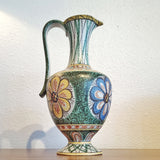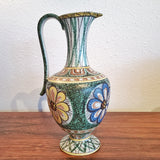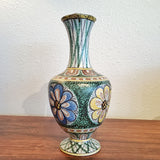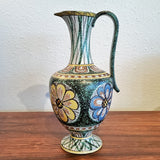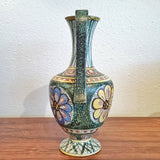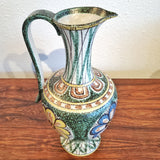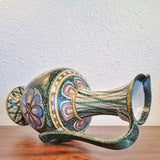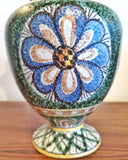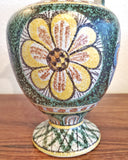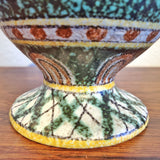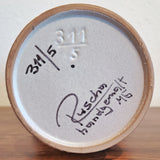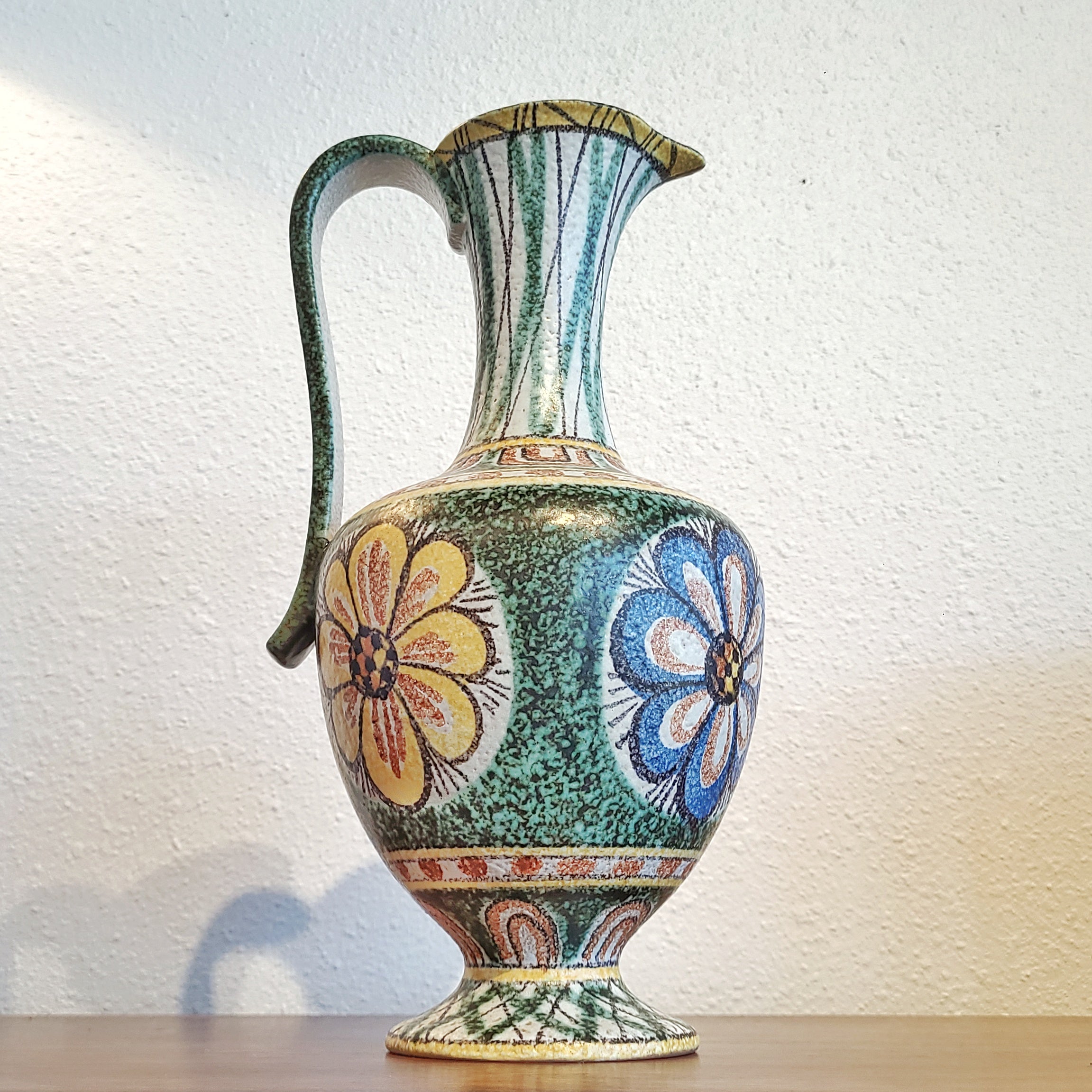
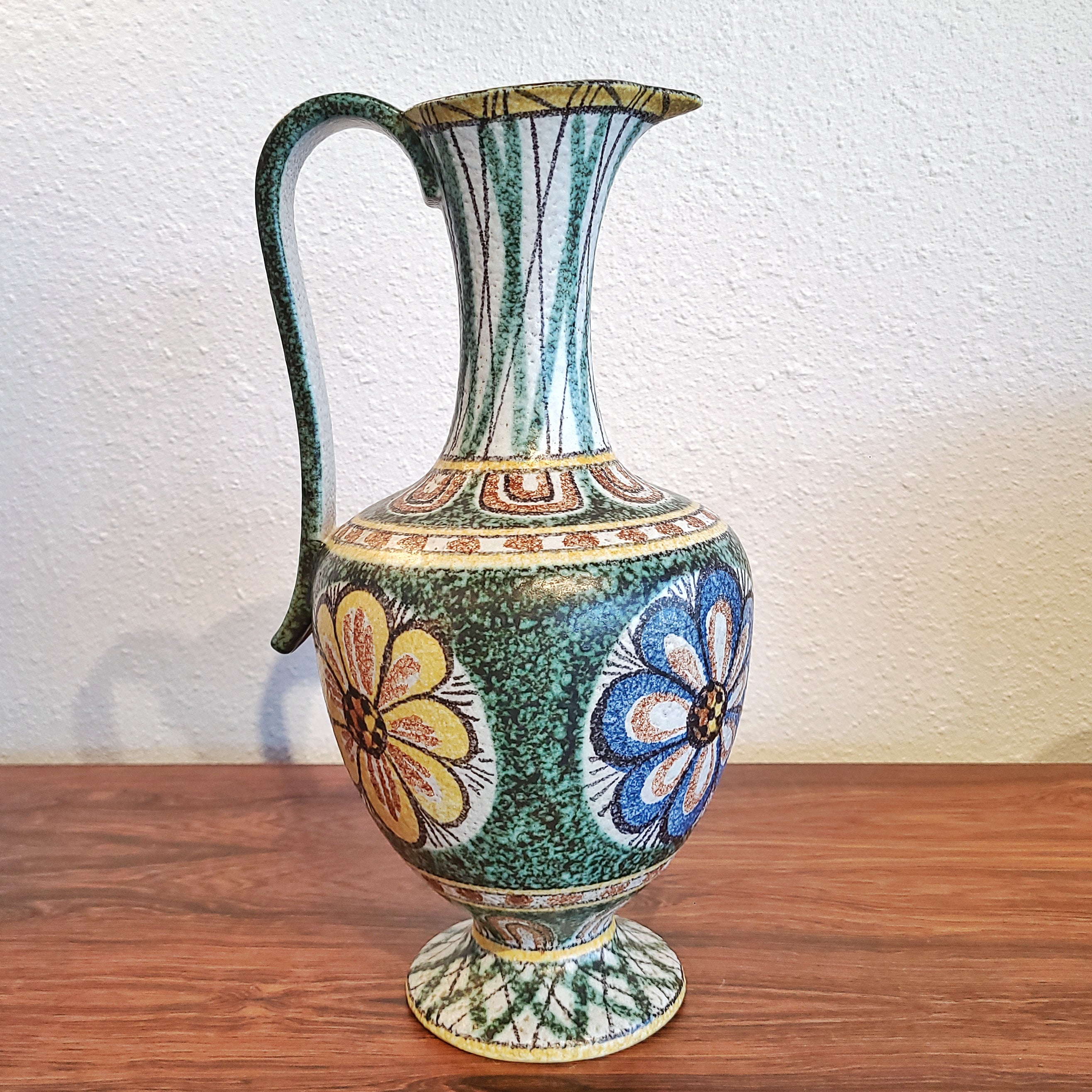
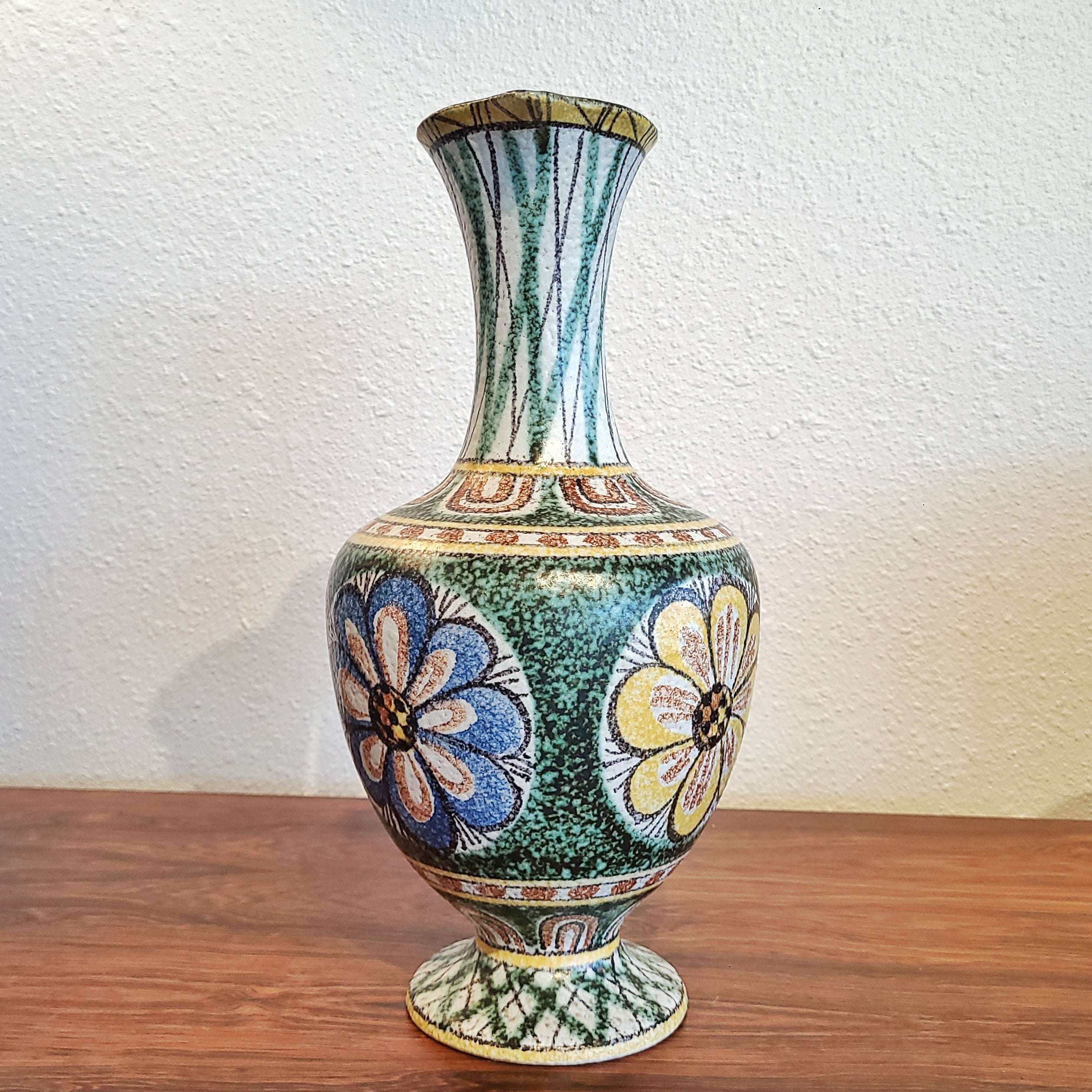


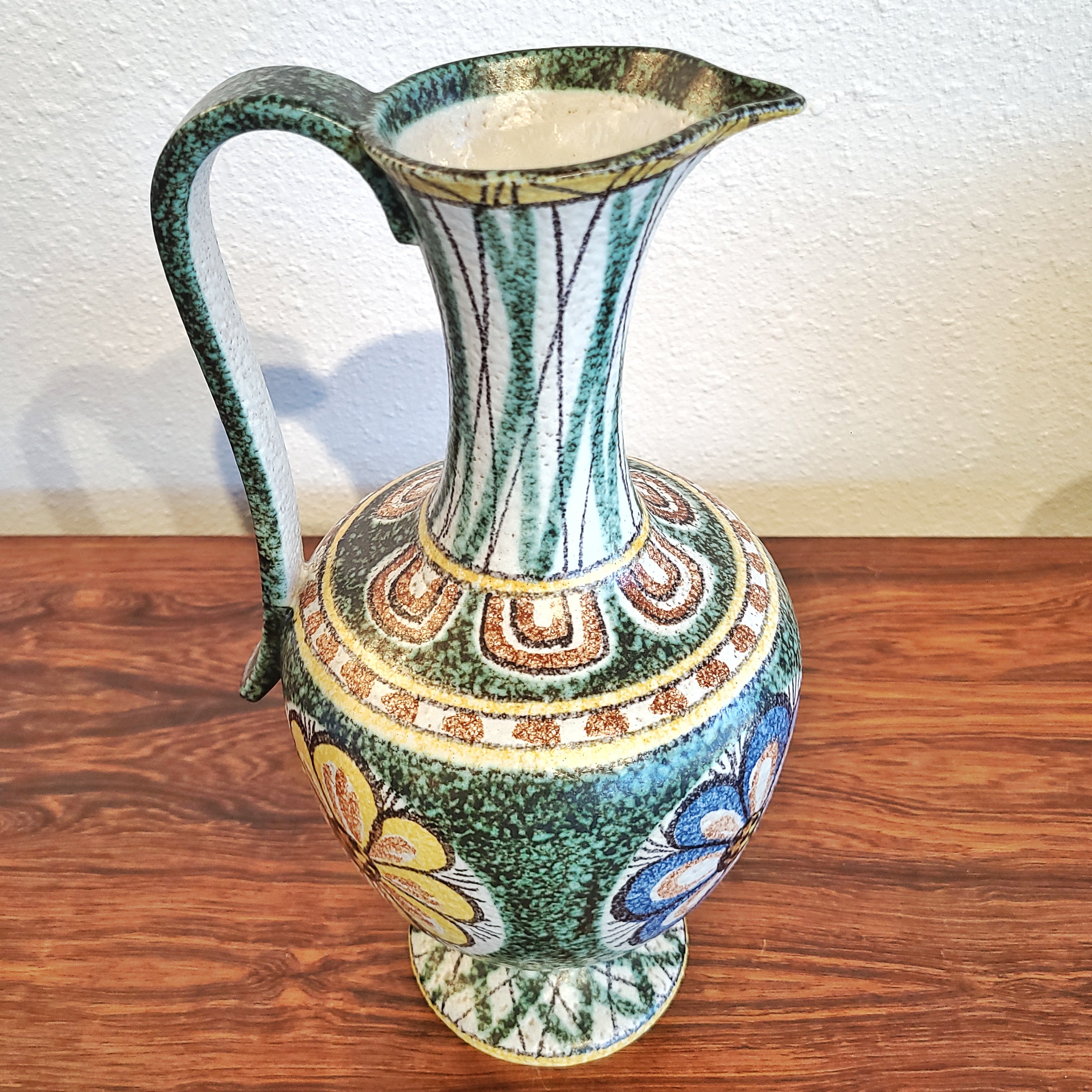

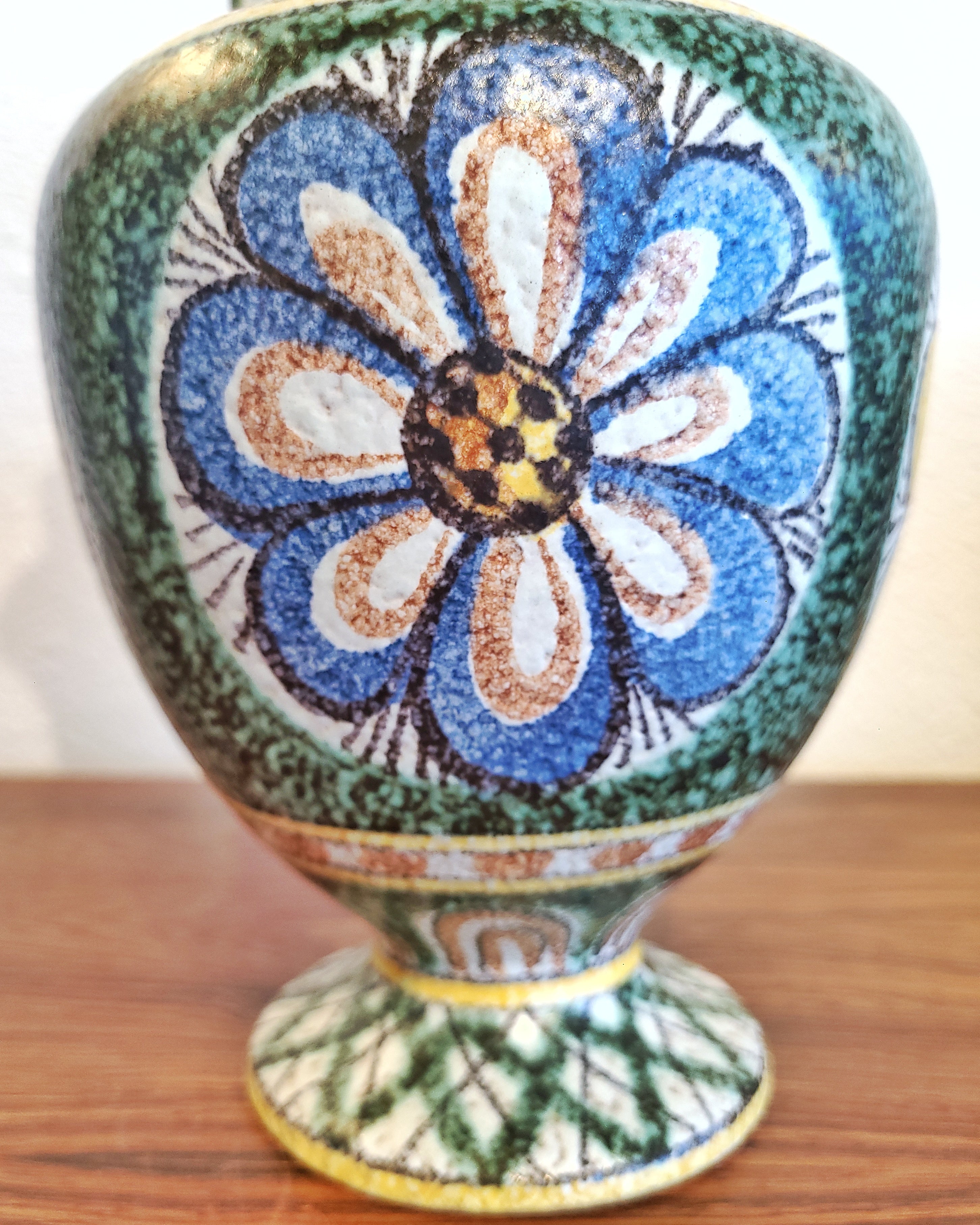
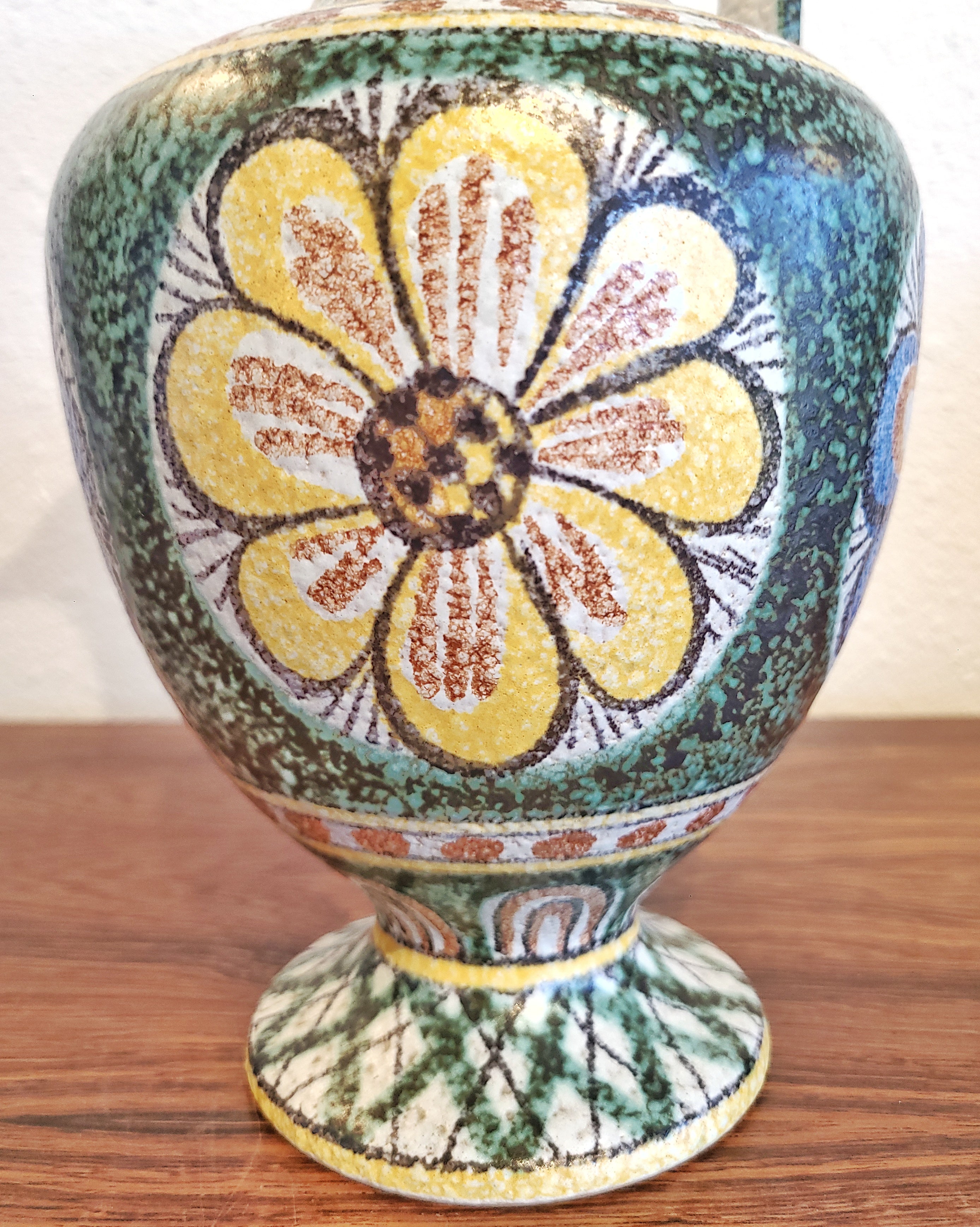
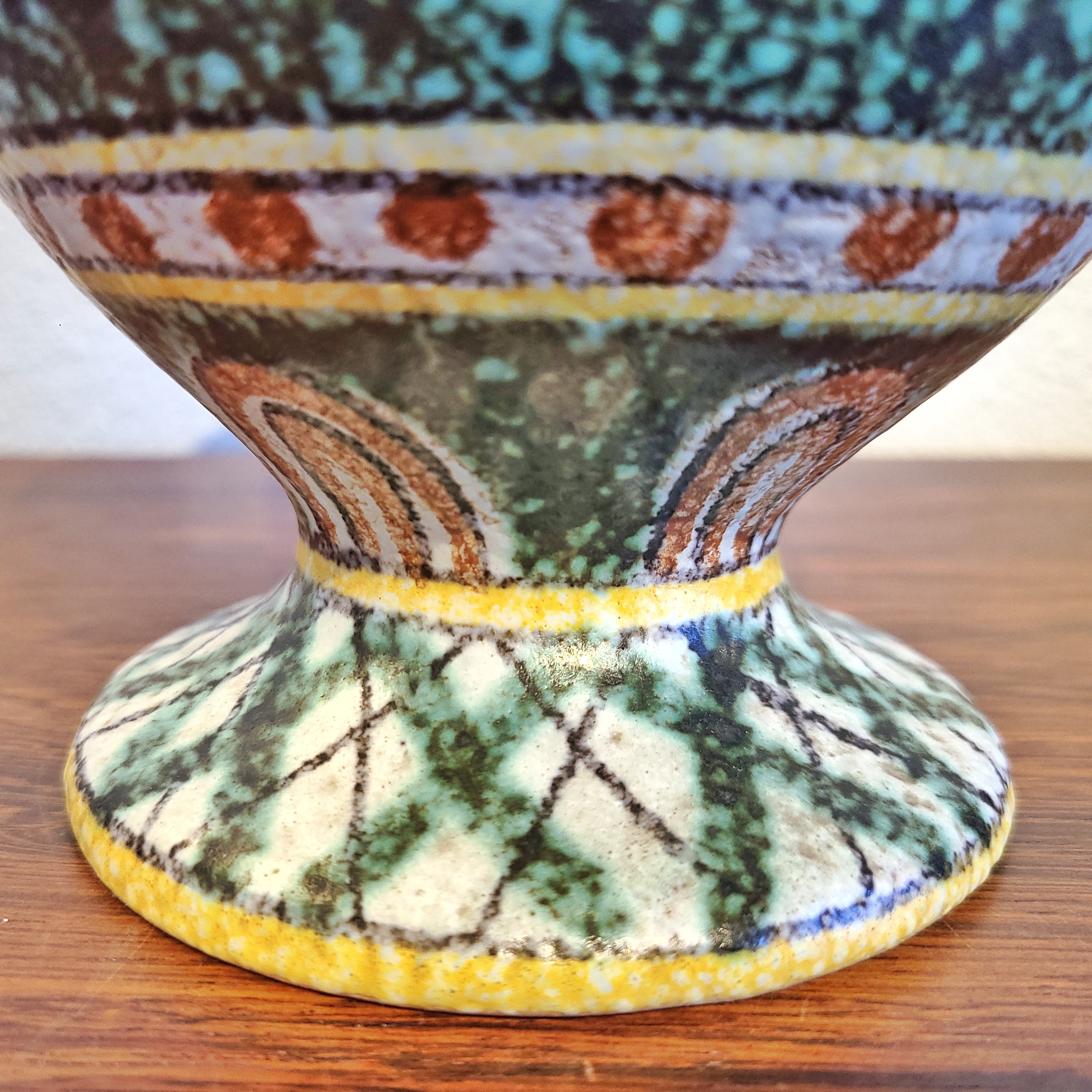

TALL RUSCHA KERAMIK ‘KAIRO’ EWER VASE Nr. 311/5
CONTACT US HERE ABOUT THIS ITEM.
A large ewer-style vase in Cilli Wörsdörfer's highly successful Kairo décor, designed near the end of her tenure with RUSCHA KERAMIK in 1954.
RUSCHA KERAMIK was launched in 1948 when Rudolf Schardt assumed the management of Klein & Schardt, his father Georg's ceramics factory in the town of Rheinbach, located southeast of Bonn in the German state of North Rhine-Westphalia. (RUSCHA is a syllabic contraction of his name.) The timing of the re-establishment ensured that the firm was in a good position to benefit from Germany's post-war boom. RUSCHA KERAMIK became a leading manufacturer during the "golden age" of Western German ceramics and is credited with some of the era's key developments. It produced some very successful and innovative forms and glazes, including the Vulcano décor (Otto Gerharz, 1951)—which heralded the move towards thick, dripping fat-lava glazes—and the iconic form Nr. 313 (Kurt Tschörner, 1954), probably the period's most famous shape. Hanns Welling, Adele Bolz, Heinz Siery, and Cilli Wörsdörfer were among other notable designers to work for RUSCHA.
RUSCHA KERAMIK was celebrated for exquisite wall plates, plaques, and tiles—manufactured for both indoor and outdoor applications—as well as its high-quality vases. Specimens from the 1970s will frequently exhibit remarkable lava and volcanic glazes. When RUSCHA closed its factory in 1996, Scheurich acquired many of its designs and molds; distinctive silver RUSCHA labels were sometimes applied to the subsequent production.
Notes on identification: White clay was used almost exclusively. The rare examples made with red-brown clay are thought to date from periods when normal supply sources ran out. Embossed and incised base-numbering was used for vessels. If a vase was made in more than one size, a single digit indicating relative size followed the form number. Low form numbers (< 100) were sometimes preceded by a letter. Like a few other manufacturers, RUSCHA KERAMIK occasionally recycled form numbers, a cause of distress for some collectors. Pieces were never molded with "Germany" or "West Germany."
In rare instances, bases were hand-inscribed—less often, painted—with the name RUSCHA and a décor name (these tend to be earlier 1950s items). Where stickers are found they always read "Ruscha Art." Many items were not stickered. Sometimes a retailer's label was applied.
CILLI WÖRSDÖRFER (b.1921) completed a five-semester study in the arts and two subsequent semesters in the chemical-technical department at the Master School of Applied Sciences and German Crafts in Höhr-Grenzhausen. From 1947 to the beginning of 1949, she worked as a ceramic painter with Bernhard Reichgeld in Höhr-Grenzhausen, and for a short time as a faience painter at the Wiesbadener Majolika-Manufaktur, which only existed for a short time, and then until 1952 as a ceramicist for Wilhelm Herkenroth in Höhr-Grenzhausen. In that year she moved to Ruscha in Rheinbach, built up the art-ceramics division there, and maintained its management until her departure at the end of 1954. It was during this time that her innovative and extraordinarily successful surface decors were created and, in addition to the later Engobe work with colorful incised decorations, branded the unmistakable appearance of Ruscha products through the first third of the following decade. After two more years at W. Herkenroth, in early 1957 she went to work as a ceramicist and decor designer at Jasba where she also changed the previously rather conventional appearance of the ornamental ceramics produced there with her abstract and colorful surface decorations. Her marriage at the end of August 1960 would, unfortunately, end her work as a ceramic artist. Some of her most successful decors include Domino and Milano which were both produced for Ruscha in 1954 and Toscana, Udine, and Verona for Jasba in 1957.
Details
- Dimensions
- 6.25ʺW × 7ʺD × 13.5ʺH
- Styles
- Boho Chic
- Mid-Century Modern
- Period
- 1950s
- Place of Origin
- Germany
- Item Type
- Vintage, Antique or Pre-owned
- Materials
- Ceramic
- Condition
- Very Good Condition, Original Condition Unaltered, No Imperfections
- Color
- Green
- Condition Notes
- Excellent Vintage Condition

